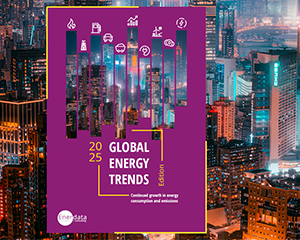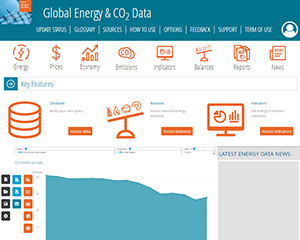Share of electricity in total final energy consumption
The share of electricity in final energy consumption slightly increased to 21% in 2024 (+3.3 pp compared to 2010).
+9 pp
Rise in the share of electricity in Mexico's final energy consumption since 2010.
The share of electricity in final energy consumption slightly increased to 21% in 2024 (+3.3 pp compared to 2010).
Since 2020, the share of electricity in global final consumption has slightly increased, reaching 21% in 2024. It has increased by 3.3 pp since 2010 (17.8%), as an increasing share of electricity is used in industry, residential and services sectors, and, more recently, in road transport with the development of electric vehicles.
Since 2010, electrification of the economies has increased at a steady pace in Asia (+6 pp to 24%, including +0.2 pp in 2024), spurred by China (+8 pp since 2010 to 27% in 2024), India (+3.5 pp to 16%), and Indonesia (+7 pp to 15%). It has also increased in Vietnam (+8 pp to 23%), Taiwan (+7 pp to 32%), Japan (+3 pp including +0.8 pp in 2024 to 31%) and South Korea (+2 pp since 2010, stable in 2024 at around 26%). Electrification has also progressed in Latin America (+4 pp since 2010 including +0.6 pp in 2024 to 21%, especially in Chile and Mexico), in the Middle East (+2 pp since 2010 to 16%, especially in the United Arab Emirates and Iran), in Algeria and in Egypt.
The share of electricity in final energy consumption grew by 0.6 pp in 2024 in North America to 23% (+1 pp since 2010) but it stagnated in Europe (+1.5 pp since 2010 to 22% in 2024), despite a noticeable growth in the Netherlands, Portugal and Türkiye. Electrification remained stable in Germany, Russia (stable around 14% since 2010) and Australia (around 23% since 2010)
The share of electricity in final consumption is particularly high in Norway and Sweden, which benefit from large hydro resources (47% and 33%, respectively).
Breakdown by country (%)
World
Trend over 1990 - 2024 - %
Our 2025 edition of Global Energy Trends presents insights on essential energy data.
We have contextualised these findings against long-term climate targets :
- Which must accelerate their efforts to meet 2050 targets?
- What are the underlying drivers explaining why Europe is struggling to achieve the Paris Agreement objectives?
- Which regions are making substantial contributions to climate mitigation?
Need more data? All the information presented in this energy data tool are extracted from Global Energy & CO2 Data service, the most comprehensive and up-to-date database on all electricity production sources: hydro, nuclear, thermal, wind, solar, geothermal. Access to the whole electricity value chain information: production capacities by technology, power generation by technology, trade, prices, consumption per sector and indicators.
Discover this service


